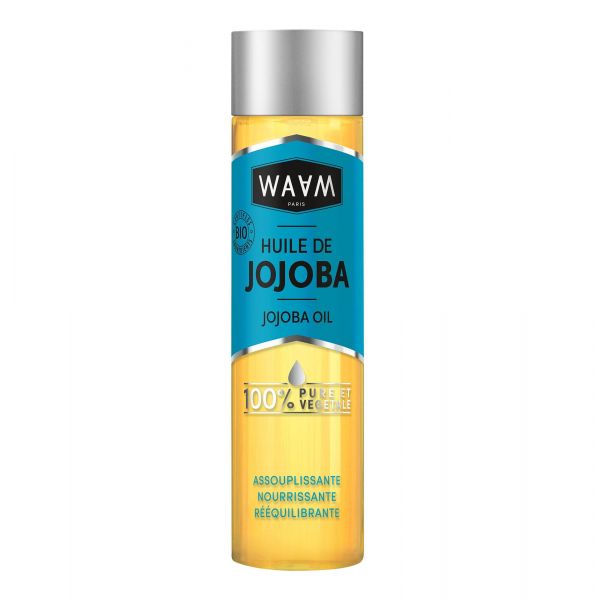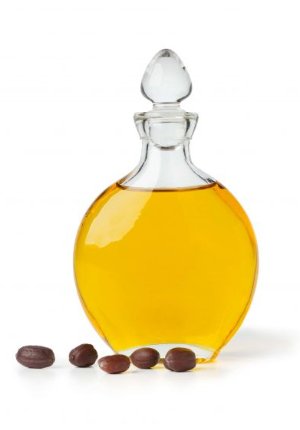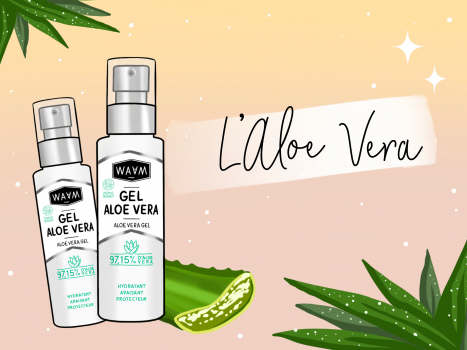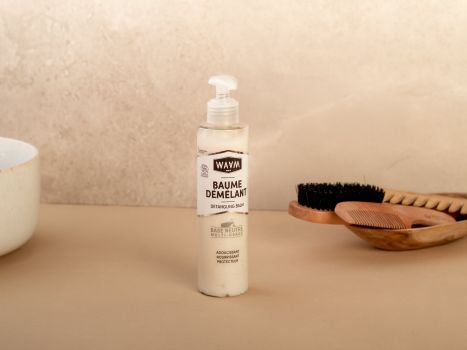Only
Start the day with jojoba oil.
Jojoba oil protects the skin from external aggressions. For this reason and many others, you can use it in the morning to replace your day cream. Dry and non-greasy, just a few drops of this oil will nourish your skin and prepare it for the day. Even if you're wearing make-up, don't hesitate! It can also be used as a make-up primer.
A precious skin care oil.
Jojoba oil is an ideal ingredient for your face care routine, as it deeply moisturizes and nourishes while leaving a non-greasy feel.
Sebo-regulating, it deeply moisturizes and nourishes combination and oily skin without clogging pores. Jojoba oil is also a soothing oil with a reputation for healing. You can therefore incorporate it into your day or night creams.
Jojoba oil is an outstanding make-up remover!
Jojoba oil is often recommended as a natural make-up remover, as it is the oil closest to human sebum. This makes it ideal for use on all skin types, even oily skin, on which it will act as a sebum regulator.
What's more, no make-up is resistant to oil, even waterproof, so you save time while nourishing your skin.
Simply take a few drops of oil and apply them directly to your face, using your hands or a washable make-up remover square. Use circular movements all over your face to dissolve make-up, paying particular attention to your eyes. Then rinse your face with lukewarm water or wash with a mild soap.
A 100% natural after-sun solution.
Jojoba oil can be applied to the skin after sun exposure. It provides all-natural protection.
Jojoba oil as a daily care product for dry hair
Jojoba oil can be used daily on all hair types, especially dry, curly hair. On damp or dry hair, a few drops are all it takes to moisturize and add shine without greasiness. For easy application, you can also use a spray bottle.
Jojoba oil in an oil bath
To care for your hair, there's nothing like an oil bath. Apply a generous amount of jojoba oil all over your hair, paying particular attention to the ends, which are often the driest and most brittle. Jojoba oil is ideal as an oil bath. Rich in vitamin E and fatty acids, it coats hair and tightens scales. Leave your oil bath on for a few hours, or even overnight. Then shampoo your hair.
Jojoba oil as a cranial massage for oily hair or to combat dandruff
For oily scalps, Jojoba oil can be used as a head massage just before shampooing.
Its benefits? Jojoba oil helps regulate scalp sebum and combat greasy roots. Take a small amount of oil and massage in circular movements for a few minutes. Then shampoo your hair. A second shampoo may be necessary to remove all the oil.



.jpg)
.jpg)








